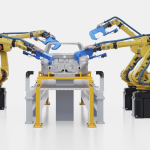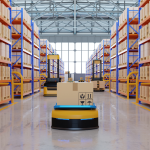Predictive ETAs, dynamic routing, and customizable mapping are transforming fleet operations. For logistics leaders, AI-powered location intelligence is now a strategic differentiator.
From Static ETAs to Real-Time Precision
In a world of unpredictable disruptions, supply chain resilience now depends on real-time responsiveness. Yet many organizations still rely on outdated, static methods for planning and tracking deliveries. Traditional estimated time of arrival (ETA) tools—based only on distance and average speed—simply can’t keep up with real-world variability.
AI-powered mapping solutions offer a new approach. By combining real-time data with machine learning, predictive ETA models factor in live traffic conditions, historical congestion trends, weather, vehicle characteristics, and even local driving restrictions. As conditions change, so do the ETAs—dynamically recalculated and shared across stakeholders.
For multi-stop logistics operations, this has a tangible impact. Optimizing delivery sequencing in real time allows dispatchers to prioritize high-value shipments and mitigate ripple effects from unexpected delays. It’s not just about keeping the truck moving—it’s about enabling warehouse teams, customers, and downstream operations to adjust with confidence.
Customization and Visibility as a Competitive Advantage
AI-powered mapping platforms also allow organizations to tailor routing logic to fit operational and compliance requirements. Whether it’s factoring in vehicle weight restrictions, preferred fueling stations, rest stops, or even proprietary delivery zones, customizable routing algorithms turn generic maps into business-aligned navigation tools.
The integration of telematics and fleet data further enhances this value. When mapping platforms combine vehicle tracking, yard management, and customer locations into a unified interface, logistics leaders gain visibility from the first mile to the last meter. With accurate geofencing and anomaly detection, they can optimize arrival times, reduce dwell times, and flag inefficiencies instantly.
There’s also a sustainability upside. By reducing idle time, avoiding congestion zones, and enabling electric vehicle (EV) routing, AI-driven logistics mapping helps companies cut emissions and fuel use—critical as regulatory and ESG pressures mount.
AI Mapping Isn’t Just Smart Tech—It’s Supply Chain Strategy
What once lived on the edge of logistics operations is now at the center. AI-powered mapping is no longer a “nice to have”—it’s the connective tissue between planning, performance, and customer experience.
Visibility doesn’t end at tracking a vehicle, it extends to understanding when and where every shipment will land—and what the business can do in response. The organizations winning today are those using live location intelligence not just to react, but to predict, optimize, and lead.







